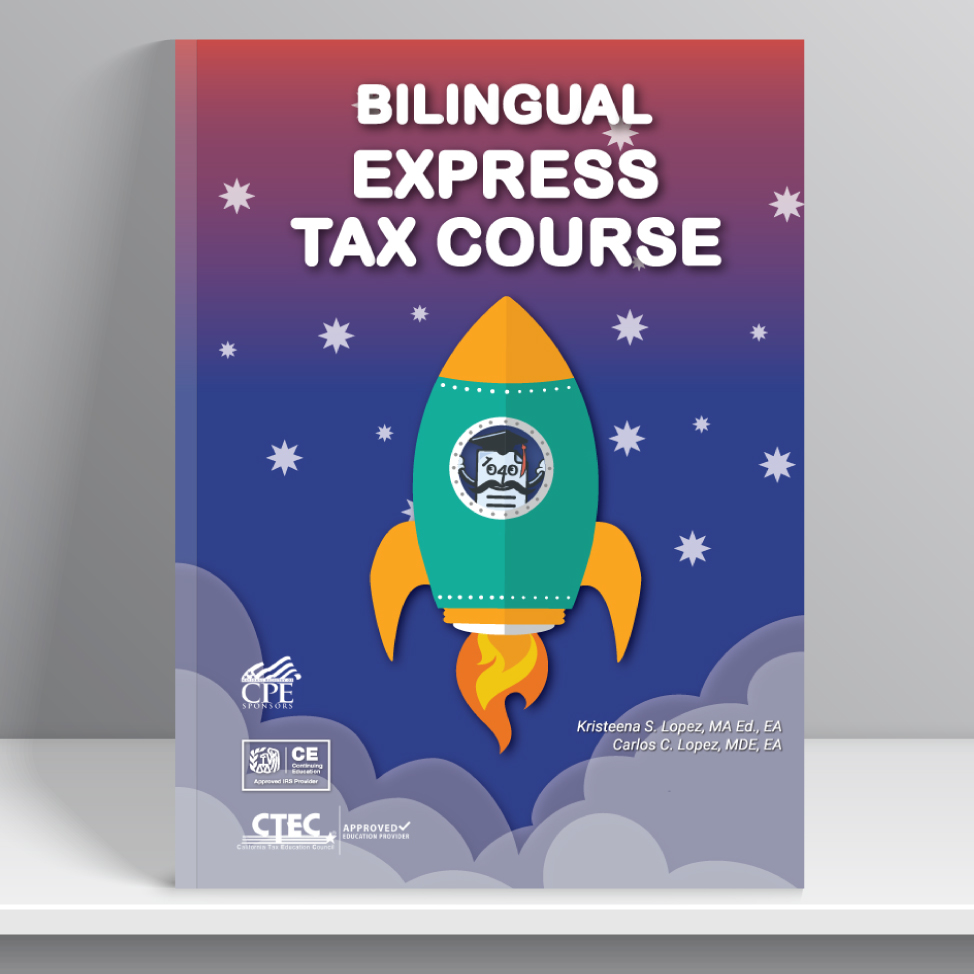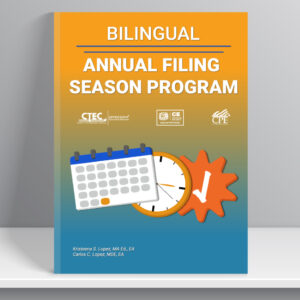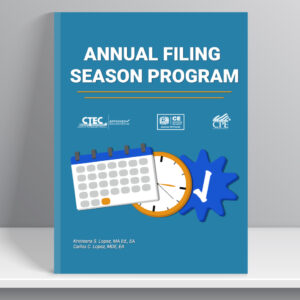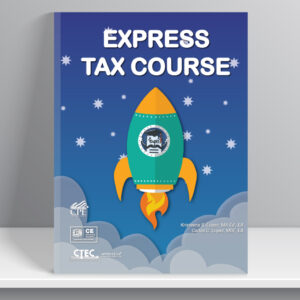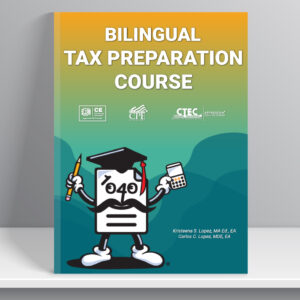Part I: Due Diligence and Penalties
This chapter will cover tax preparer due diligence and penalties. When the taxpayer files a return with refundable credits the tax preparer needs to complete an accurate tax return and complete Form 8867, which is attached to the taxpayer’s return.
————————————————————–
Este capítulo cubrirá la diligencia debida y las sanciones del preparador de impuestos. Cuando el contribuyente presenta una declaración con créditos reembolsables, el preparador de impuestos debe completar una declaración de impuestos precisa y completar el Formulario 8867, que se adjunta a la declaración del contribuyente.
Part II: Federal Tax Law
Compiling Taxpayers Information
Preparing tax returns is an art; knowing which questions to ask will help determine the best tax situation for the individual. Just imputing information into software does not prepare an accurate tax return. The saying is true: “garbage in, garbage out”. Entering incorrect information so that the taxpayer receives a higher refund is not the best situation for you or the client. This chapter provides you with a brief overview of current year forms and sample questions to determine the best tax position for the taxpayer. Asking the taxpayer, the right questions from the beginning provides the tax preparer accurate answers needed to complete the tax return.
————————————————————–
La preparación de declaraciones de impuestos es un arte; saber qué preguntas hacer ayudará a determinar la mejor situación fiscal para la persona. La simple imputación de información al software no prepara una declaración de impuestos precisa. El dicho es cierto: “basura entra, basura sale”. Ingresar información incorrecta para que el contribuyente reciba un reembolso mayor no es la mejor situación para usted o el cliente. Este capítulo le brinda una breve descripción de los formularios del año actual y ejemplos de preguntas para determinar la mejor posición fiscal para el contribuyente. Hacerle al contribuyente las preguntas correctas desde el principio le brinda al preparador de impuestos las respuestas precisas necesarias para completar la declaración de impuestos.
Filing Status, Dependents and Deductions
This chapter will present an overview of the Tax Cuts and Jobs Act standard deduction and what circumstances permit taxpayers to claim a higher standard deduction. You will also learn what an exemption is, what exemptions each of the filing statuses can claim, and how to identify a qualifying dependent.
————————————————————–
Este capítulo presentará una descripción general de la deducción estándar de la Ley de Reducción de Impuestos y Empleos y las circunstancias que permiten a los contribuyentes reclamar una deducción estándar más alta. También aprenderá qué es una exención, qué exenciones puede reclamar cada uno de los estados civiles de declaración y cómo identificar a un dependiente calificado.
Income
The IRS has the authority to tax all income from whatever source it is derived. This includes compensation for services, gains from dispositions of property, interest and dividends, rent and royalties, pensions and annuities, gambling winnings, and even illegal activities. All such income a person receives is collectively referred to as “worldwide income.” However, not all money or property is taxable or subject to tax. This chapter will cover the different types of taxable and nontaxable income and show you where and how to report such wages on a professionally prepared tax return. A tax professional must recognize the different kinds of taxable income, tax-exempt income, and other income included in Schedule 1, line 21, and must know how to figure out the taxable percentage on Social Security benefits.
————————————————————–
El IRS tiene la autoridad para gravar todos los ingresos de cualquier fuente que se derive. Esto incluye la remuneración por servicios, ganancias por disposiciones de propiedad, intereses y dividendos, alquileres y regalías, pensiones y anualidades, ganancias de juego e incluso actividades ilegales. Todos los ingresos que recibe una persona se denominan colectivamente “ingresos globales”. Sin embargo, no todo el dinero o propiedad es gravable o sujeto a impuestos. Este capítulo cubrirá los diferentes tipos de ingresos gravables y no gravables y le mostrará dónde y cómo declarar dichos salarios en una declaración de impuestos preparada profesionalmente. Un profesional de impuestos debe reconocer los diferentes tipos de ingresos gravables, ingresos exentos de impuestos y otros ingresos incluidos en el Anexo 1, línea 21, y debe saber cómo calcular el porcentaje imponible sobre los beneficios del Seguro Social.
Tax Credits and Payments
A nonrefundable tax credit reduces the amount of tax liability that may have to be paid. Unlike a deduction, which reduces the amount of income that is subject to taxation, a credit directly reduces the tax itself. There are two types of credits: nonrefundable, which cannot reduce tax liability below zero, and refundable, which can reduce tax liability below zero, resulting in the need for a refund.
————————————————————–
Un crédito fiscal no reembolsable reduce el monto de la obligación tributaria que debe pagarse. A diferencia de una deducción, que reduce la cantidad de ingresos sujetos a impuestos, un crédito reduce directamente el impuesto en sí. Existen dos tipos de créditos: no reembolsables, que no pueden reducir la responsabilidad fiscal por debajo de cero, y reembolsables, que pueden reducir la obligación tributaria por debajo de cero, lo que resulta en la necesidad de un reembolso.
Part III: What Every Employee Needs to Know
Studies have shown that the first 3 seconds between two individuals is crucial. Eye contact, facial expression, and stature all determine how the individual will respond to the other person. It is very important in the tax preparation business that all employees and employers understand the importance of interacting with others. Although most of this chapter will use the terms receptionist or office staff, this section is important for all employees and employers in training excellent employees.
Employers, this section will help you relieve some of your stress during tax season. Take the time to train the front office staff in how you want them to answer your phone, how to deliver messages to you, and how to handle difficult customers.
The content in this section is based on our experiences. The examples given are suggestions, and as an employer you may be able to add areas that are unique to you. If you share them with us, we can share them with others.
————————————————————–
Los estudios han demostrado que los primeros 3 segundos de interacción entre dos personas son cruciales. El contacto visual, la expresión facial y la estatura determinan cómo responderá el individuo a la otra persona. Es muy importante en el negocio de preparación de impuestos que todos los empleados y empleadores comprendan la importancia de interactuar con los demás. Aunque la mayor parte de este capítulo utilizará los términos recepcionista o personal administrativo, esta sección es importante para todos los empleados y empleadores en la capacitación de excelentes empleados.
Empleadores, esta sección los ayudará a aliviar parte de su estrés durante la temporada de impuestos. Tómense el tiempo para capacitar al personal de recepción en la manera en que desean que respondan su teléfono, entreguen mensajes y manejen a los clientes difíciles.
El contenido de esta sección se basa en nuestras experiencias. Los ejemplos dados son sugerencias, y como empleadores pueden agregar áreas que son únicas para ustedes. Si comparten dichas áreas con nosotros, podemos compartirlos con otros, y con esto harán que todas nuestras prácticas fiscales crezcan y sean más prósperas.
| Course Details | Included in this course |
| Title: 2023 Bilingual Express Tax Course Level: Basic Delivery Method: Self-study |
To earn certificate of completion:
• Pass Final Exams with 70% (or better)
• Complete course survey• 3-Part eBook
• Videos
• Practice Tax Returns
• Certificate of Completion
• Credits reported to CTEC and IRS
• Final Exams

